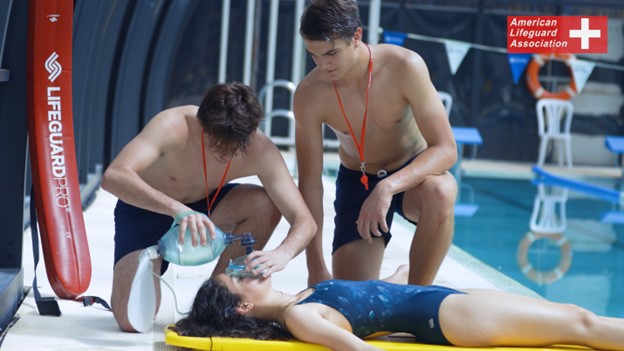
Lifeguards have been the full concentrations eyes of beaches, pools, and water parks for more than 100 years, assuming an essential part in guaranteeing public safety. The center liabilities of lifeguards — rescues, surveillance, and first aid — stay unaltered, however the means of playing out these tasks have advanced with new technology.
Today, lifeguards are trained in physical skills as well as furnished with cutting edge apparatuses that amplify their effectiveness and response times. As aquatic environments become progressively swarmed, these mechanical advancements are changing the role of lifeguards and enhancing their capacity to prevent accidents and save lives.
Conventional lifeguarding depends intensely on physical presence and human perception, which has restrictions. With the coming of drones, lifeguards can now screen immense stretches of water from a solitary vantage point.
Drones furnished with high-definition cameras give ongoing ethereal perspectives, permitting lifeguards to identify and evaluate perilous circumstances according to a more extensive viewpoint. For example, in large waterways, where swimmers might be a long way from lifeguard stands, drones empower swift visual sweeps, further developing coverage and lessening response times.
Remote monitoring systems are another innovative advancement reshaping surveillance. High-tech cameras set around pools or water parks, associated with artificial insight (simulated intelligence) systems, can distinguish strange movements, flagging potential drowning occurrences.
These cameras track swimmers' way of behaving and alert lifeguards immediately, even in areas that are difficult to straightforwardly screen. This sort of simulated intelligence helped surveillance is a significant stage toward preventing drowning, as it empowers quicker mediations in high-risk circumstances.
Wearable technology is another development adding a layer of safety in aquatic settings. Smart bands and biometric sensors, intended for swimmers, assist with monitoring their pulses, oxygen levels, and other fundamental signs. If a swimmer's vitals drop or show indications of distress, the wearable gadgets can set off an alert to nearby lifeguards, permitting them to swiftly act.
For lifeguards themselves, these wearables give significant experiences into their own physical conditions, especially during extraordinary rescue operations. For example, some gadgets can measure exhaustion levels, guaranteeing that lifeguards are operating inside safe physical cutoff points.
These devices are likewise useful in lifeguard training programs, as they give information on physical performance, assisting learners with further developing perseverance and strength — pivotal characteristics in lifesaving circumstances. This information driven approach to American lifeguard classes and certification guarantees that those on the job are more ready physically and mentally for the demands of the job.
The lifeguard training scene has extended with the coordination of virtual reality (VR) simulations. Customary training methods include genuine simulations, which can be effective yet additionally restricted in scope. VR offers immersive experiences that reproduce different rescue situations in a safe, controlled environment.
Lifeguard learners can experience all that from large-wave rescues to swarmed pool emergencies with next to no gamble. These virtual situations offer important experience, allowing lifeguards an opportunity to rehearse decision-production and emergency responses in high-stakes, reasonable settings.
Furthermore, VR permits mentors to mimic more uncommon however basic situations that would be trying to reproduce, in actuality, like unexpected underwater entrapments or complex rescues in high tides. The openness of VR training modules means more people searching for "lifeguard certification near me" are probably going to experience this technology, which assists produce with bettering arranged lifeguards equipped for answering a variety of emergencies.
Effective communication is vital in lifeguarding, where consistently counts. Propels in communication technology currently permit lifeguards to organize rescues and get emergency alerts all the more effectively. Conventional walkie-talkies have largely been supplanted by digital radios, which offer more clear sound, even in boisterous environments. Some models are water-resistant and can interface straightforwardly with emergency response groups, guaranteeing that lifeguards can speak with medical work force or local specialists quickly.
Mobile apps have likewise become instrumental in lifeguarding operations. Numerous lifeguard stations use apps that incorporate GPS tracking, empowering lifeguards to follow each other's areas and direction movements across large areas, for example, beaches or water parks. Apps that offer constant weather updates and surf conditions additionally assist lifeguards with evaluating possible hazards, changing their approach as needs be.
Maybe the most cutting edge advancement in lifeguarding technology is the utilization of lifesaving drones and rescue robots. Some of these drones are intended to convey buoyancy gadgets and delivery them to swimmers in distress, giving immediate assistance while lifeguards advance toward the scene. This additional level of fast response has demonstrated particularly important in open water rescues, where a couple of moments can have the effect among life and death.
Rescue robots, while still a creating technology, are intended to help lifeguards during complex rescues. These robots can be somewhat controlled or programmed to explore toward a striving swimmer, giving buoyancy support and going about as an intermediary until human assistance shows up. These advancements significantly increment the possibilities of endurance in testing rescue situations, adding an additional layer of security for swimmers.
Mechanical advancements are changing lifeguarding from an exclusively physical job into a highly particular role that consolidates digital instruments and information driven bits of knowledge. From drones and wearables to virtual reality and lifesaving robots, these innovations upgrade lifeguard productivity and safety guidelines, establishing safer aquatic environments for everybody.
For those interested in seeking after a lifeguard career, these innovations are becoming necessary parts of training, making it essential to search for the best ALA lifeguard certification near me that consolidates current methods.
Organizations like the American Lifeguard Association (ALA) are driving the charge in embracing these advancements, guaranteeing that lifeguards are preferable prepared and trained over ever before. As technology keeps on developing, so too will the lifesaving capacities of the cutting edge lifeguard, introducing a new era of safety and preparedness in aquatic environments.